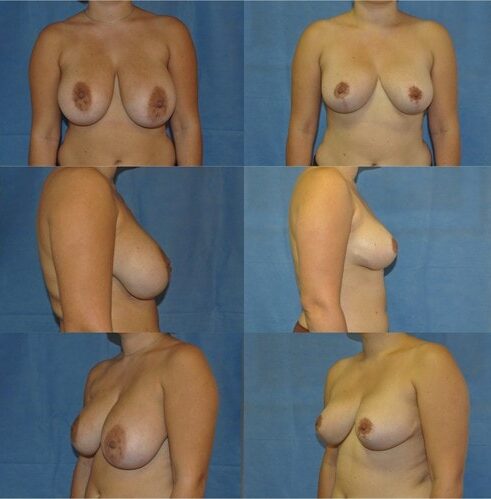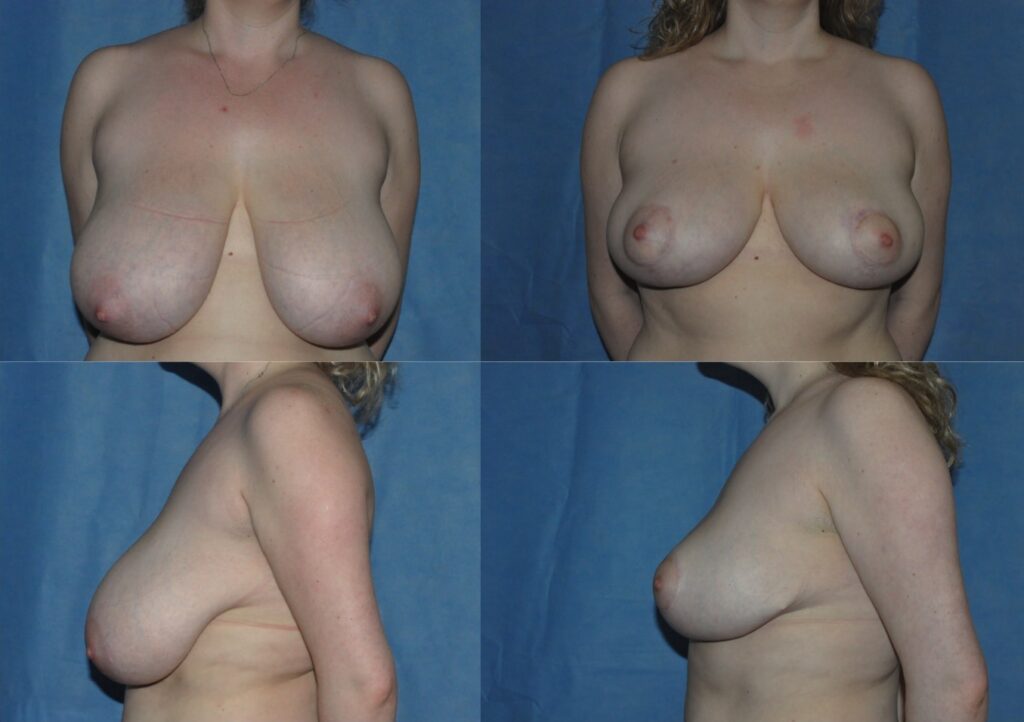Breast Reduction Surgery
Tunbridge Wells, Kent, London
The breast reduction surgery procedure
Your breasts are reduced by removing breast tissue from below and around your nipple. The nipple is raised to a higher position and the breast skin is then stitched leaving you with a scar around the areola (the coloured skin around the nipple), vertically down from the areola to the crease under the breast and often a horizontal scar underneath the breast along the breast crease (i.e. the scar is shaped like an inverted letter “T” or an anchor).
What does it involve?
A breast reduction is performed under a general anaesthetic (with you asleep). You will wake up with surgical tapes along the wounds and a surgical drain (tube) coming out of each breast. You will need to go into a supportive post-surgical or sports bra following surgery.
What are the benefits?
Breast reduction techniques not only remove the weight and the volume (size) of the breasts, but also provide a breast lift.

I Finally Love My Body
“As a young woman with a smaller frame having large breasts was very hard on my body image. I felt safe and respected whilst going through all the procedures and I thank Dr Pacifico for so much! Happy!”
–
RealSelf Patient Review
How long does the surgery take?
The surgery takes about 2-3 hour, depending on whether additional liposuction is needed to the sides of the chest wall.
What is the recovery period?
You will stay in hospital overnight after the surgery, or occasionally for 2-nights. This is to ensure that there is only minimal fluid coming into your drains, which may then be removed. You should wear a supportive post-surgical or sports bra day-and-night for at least 6-weeks after surgery, and sometimes for 3-months.
How long before daily activities may be resumed?
Strenuous activity should be avoided for at least 2-weeks. You may be able to drive after this period, but remember that you need to be comfortable in performing an emergency stop or similar manoeuvre. If you drive too early and you need to do an emergency stop, the wounds may come apart from pressure of the seatbelt.
What are the success rates?
Of all the plastic surgery procedures we perform, breast reduction is consistently shown to have the highest patient satisfaction rate.

What are the possible complications?
As for any plastic surgery procedure, there are risk for complications to occur in breast reduction surgery. These include surgical wound infection and wound healing issues (most common at the T junction where the scars meet), as well as bleeding after surgery requiring going back to the operating theatre.
Whilst most scars settle down well, some people form lumpy scarring that may need further treatment. There can be issues with the nipple such as a change (or loss) in sensation, and very rarely, death of the nipple due to damaged blood supply. Fat necrosis describes the breakdown and death of fat within the breast due to poor blood supply and “bottoming out” describes the breast, over time, descending below the level of the nipples.
Some degree of breast asymmetry is normal, but sometimes a significant degree of asymmetry may need addressing with further surgery. Overall, revision surgery (for any reason) may be indicated in 10-15% of patients. Finally, blood clots (DVT or PE) are a risk with any surgery, but are fortunately rare in breast reduction.
Before and After Photos

Want to learn more about Breast Reduction in Tunbridge Wells?
To learn more about breast reduction, please contact us.
Make an EnquiryVideos
Types Of Breast Reduction
Marc Pacifico Breast Reduction FAQs
Expectations in Plastic Surgery
